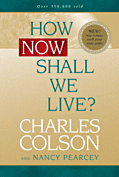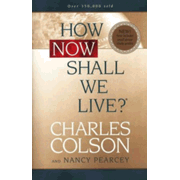Described by Charles Colson as "the most important work of his career," this book serves well for a broad market as a primer on worldviews. Using anecdotes and personal experiences, the authors draw on real life to demonstrate why worldviews matter. Writing for a Christian audience, they cover the basics questions within the context of "creation, the fall, redemption, and restoration." For example, questions about the origin of life come under "creation," and questions about suffering and evil come under "the fall." The chapters on "restoration" offer optimistic strategies that work toward reinstating a dominant Christian worldview. The book ends with a number of chapters about how a Christian worldview should translate into life actions.
The book draws heavily upon current events in contrast to Schaeffer's How Should we Then Live?, which draws heavily upon history. Although it is a lengthy book at 574 pages (almost 100 are endnotes and index!), it is fairly easy to read. Teens should have no problem with it.
A companion study guide can be used for group classes. It is set up for two, 13-week sessions, meeting once a week. Obviously, a homeschooler can complete it in much less time. The study guide is excellent, focusing on understanding of content, biblical connections, and applications. The workbook format allows the student to make written responses in the book. A student could work through it on his or her own, although it would be more stimulating to discuss the questions in a group. You might also want to encourage your church to use this for a Sunday School or Bible Study class.










